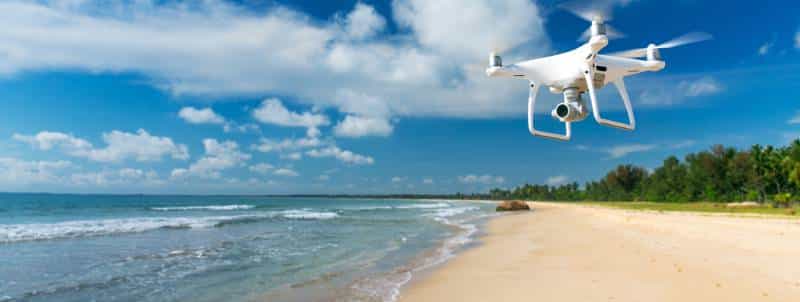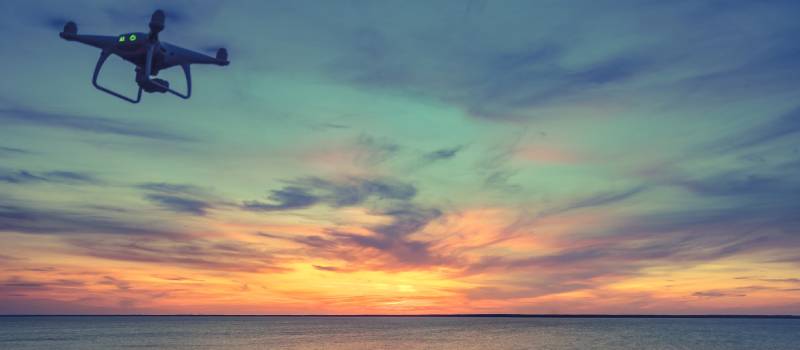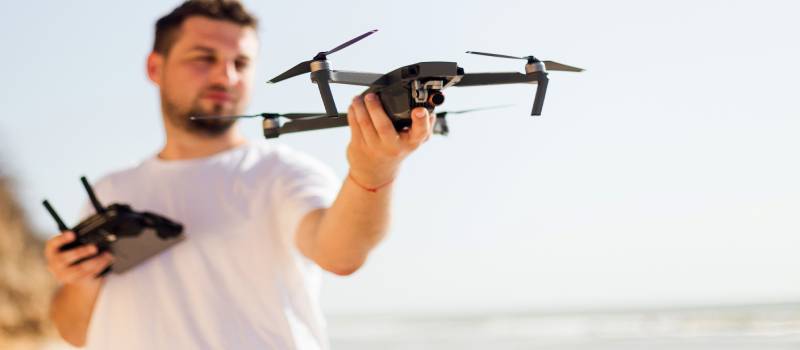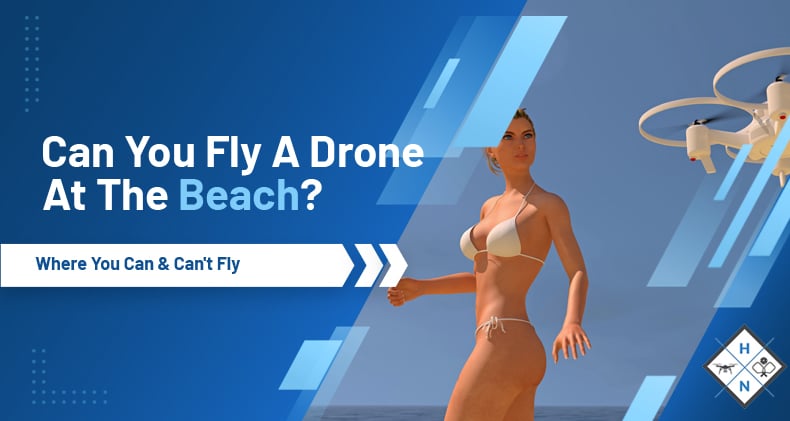The beach is one of the most visited locations globally; everyone loves to have a great time on the beach with friends and families. If you are a drone pilot, you must have thought about flying your drone at the beach. However, is it permitted to fly a drone at the beach? Let us find out.
Of course, you can fly your drone at any beach of your choice. The Federal Aviation Administration does not have any laws prohibiting the flight of drones at beaches. However, there are state laws that regulate the flying of drones at some beaches. These laws vary from state to state.
The beach is one of the best places to fly a drone. However, it is essential that you fly your drone in compliance with state and local laws. Before you fly a drone, ensure you learn the state laws regulating drone flight. You will save yourself from much trouble by doing that.
Can You Fly A Drone At The Beach?
Although there are no FAA laws that make flying drones on the beach illegal, you still have to abide by the existing drone laws. There are laws for recreational and commercial drone pilots, and you must know and fly your drone in compliance with these laws to avoid prosecution.
We will look at the FAA laws for flying a drone commercially and recreationally, and we will also look at laws you must abide by when flying a drone on a beach.

Laws For Flying A Drone Recreationally
- Take and pass The Recreational UAS Safety Test (TRUST).
- Fly your drone for only recreation and hobby.
- Your drone must be registered with the FAA.
- You must always fly your drone with a visual line of sight.
- Your drone must not weigh above 55 pounds, unless it is certified by any community-based organization.
- You cannot fly a drone in Class B, C, D, and E airspace; they are controlled airspace. You can fly in Class G airspace.
- You must never fly your drone near any manned aircraft.
- You must not fly your drone in a way that impedes and obstructs emergency response efforts.
- You must never fly a drone under the influence of drugs or alcohol.
- You must not fly your drone over other people or moving vehicles.
- You must not fly your drone at night without adequate lighting.
Laws For Flying A Drone Commercially
- Your drone must be registered with the Federal Aviation Administration.
- You must have a Remote Pilot Certificate from the FAA to fly a drone commercially.
- Your drone must not weigh more than 55 pounds.
- You can fly your drone only in Class G airspace.
- You must maintain a visual line of sight with your drone at all times.
- You must fly your drone at or below 100 mph.
- You can fly your drone at or below 400 feet from the ground.
- You must not fly a drone from a vehicle in motion, except in a sparsely populated area.
The laws above are mandatory and enforced in every state and every city in the United States of America. However, some of these laws can be waived.
- If you receive a Part 107 waiver from the FAA, all the laws for flying commercially can be waived except the need to fly in Class G airspace and the weight requirement.
- If you apply and receive approval for special airspace authorization, you can bypass the law of flying in Class G airspace.
Regardless of the reason you are flying a drone, you must ensure you abide by these laws to avoid being prosecuted.
General Laws For Flying A Drone At The Beach

The laws for flying a drone at the beach are part of the laws for flying a drone recreationally and commercially. You cannot assume that since the FAA does not enforce any laws for flying a drone at the beach, you can violate the laws in existence. If you are caught, you will be prosecuted. These are the most important laws to abide by when flying at a beach.
Avoid Flying Over People
One of the most important laws you must abide by when flying your drone anywhere is to avoid flying directly over people. The number of people does not matter; you must not fly your drone over a single person or a group of people. The only people you can fly your drone over are those participating directly in the drone's operation.
Beaches are always crowded with people having a great time, cooling off, and enjoying themselves, so you cannot fly your drone over them. That is a violation. You need to move away from the crowds to fly your drone.
Always Maintain A Visual Line Of Sight
You will face many temptations when flying a drone at the beach; you may want to fly out to sea or along the coastline. You can only fly your drone as far as you can still see it. Flying a drone out to sea is a great idea, but you would lose sight of your drone, and that would be a violation of the FAA laws.
So, in all your drone operations on the beach, this law must be in mind; you should always maintain a visual line of sight with your drone. You should know that using visual aids like binoculars, or the drone's First Person View do not count as maintaining a visual line of sight.
Fly In Class G Airspace
The law of the FAA is that recreational and commercial drone pilots should only fly their drones in uncontrolled airspace or Class G airspace. The Class G airspace is 400 feet from the ground, and that is where you are free to fly your drone. This law was enforced to avoid interference and collisions between unmanned aircraft like drones and manned aircraft like airplanes. So, you must not fly your drone higher than 400 feet.
Avoid Flying Close To Airports
It is prohibited by the Federal Aviation Administration to fly a drone within five miles of an airport. The beach you may choose to fly your drone on may be close to an airport, so you must be careful when flying your drone. If you are caught flying a drone close to an airport, you could end up paying a large fine and are at risk of a jail sentence.
You can get permission to fly your drone as a recreational pilot near an airport by requesting authorization. You would have to request authorization from the Low Altitude Authorization and Notification Capability System (LAANC).
Where Can You Fly A Drone?

Before you venture into flying a drone, you need to know the places where it is legally allowed to fly a drone. If you are caught flying a drone in a no-fly zone, you will be prosecuted. If you want to fly a drone, here are the places you can do so:
- State and local parks
- Beaches
- Lakes
- Mountainside
- Countryside.
- Class G airspace or uncontrolled airspace.
Where Can’t You Fly A Drone?
For your safety and the safety of other people, there are places where flying drones is prohibited. You cannot fly a drone in or near:
- Any national park
- Stadium or other sports arenas.
- Airports
- Emergency and rescue operations
- Security locations, like military bases, nuclear power plants, and prisons.
- Restricted or controlled airspace.
- Washington DC.
Final Thoughts
Drones are one of the best inventions of man; flying a drone can be refreshing and exciting. However, you must not allow the excitement to put you at risk. You should ensure you fly your drone in compliance with all the Federal Aviation Administration laws. Have a great and pleasant time flying your drone safely.
Shawn Manaher loves to play with new toys and dive into new hobbies. As a serial entrepreneur, work definitely comes first but there is always room for hobbies.

